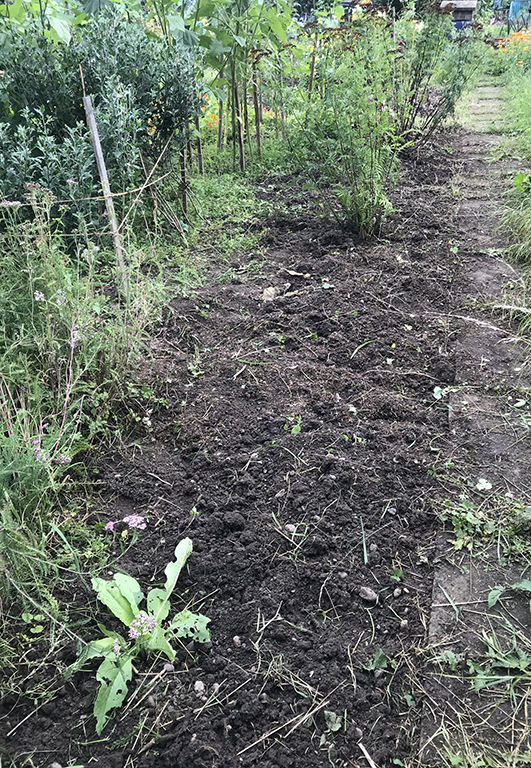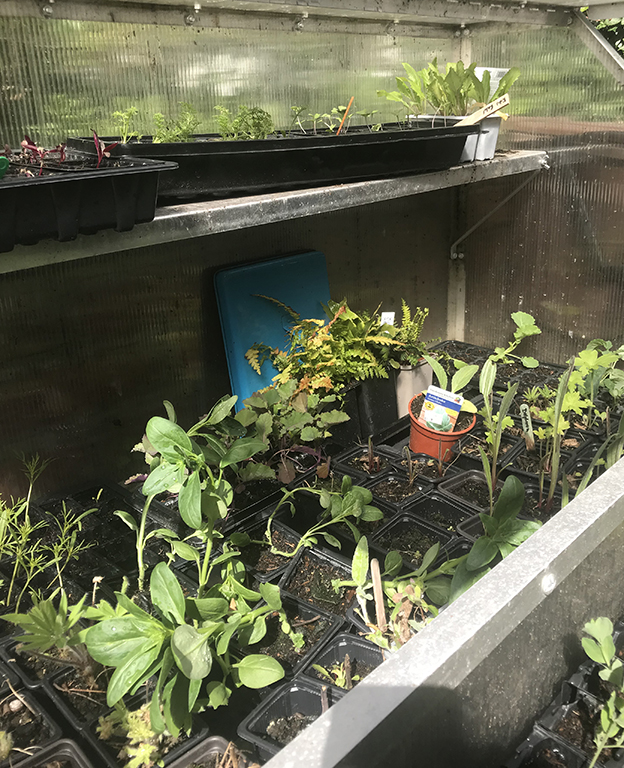The harvest continues. Cousin Sue mentioned at the weekend that the September harvest is what the August harvest should have been – and YES is my resounding response. Normally the raspberries are long gone by now, but we’re only mid-way through the harvest, picking punnets and punnets of the luscious red fruits every other day. The cosmos are still on the sluggish side, but getting there, and the sunflowers are at their peak. I sometimes wonder why anyone ever bothers growing anything else; a sunflower grove is THE most joyous thing.



But it’s the hops’ turn for glory. We have four plants in total, of two different Herefordshire varieties (I can’t remember which), and for most of the year they do their own thing, pretty much unnoticed. In the spring Matt cuts back the shoots to leave only three stems per plant, which are left to race up the hop twine on our home-made hopolisk. We don’t water or feed them, though I do hack back the numerous ‘spare’ shoots that grow out at arm level, because their barbed leaves are abrasive and leave me with scars that last for months. And then we get to August and one day I will notice that the hops are incredible: reaching at least 15 foot into the sky and covered in golden papery corms. Matt rips one up to check for ripeness, looking for yellow powder and a slightly resinous tackiness. It’s time. Cue the hop harvest.

It is significantly more difficult to harvest hops compared to, say, cavolo nero or cosmos. For a start we need tools….hammer, spanner, strong male arms. After cutting the hop twine and bines at the base, Matt bashes the bolt on the hopolisk (it will inevitably have rusted up a little) to make the whole contraption collapse sideways. Our job is to ease it down gently, gently, gently, so that it doesn’t take out the sunflowers, chard, parsnips, kale, pre-schooler, or whatever else lies in the way. Once safely down, the tops of the hop bines are cut from the metal support and then all 15 bushy feet of them are carried into the van and then home, leaving a trail of hop flowers and leaf debris in their wake.


In the 8 years on the allotment, Matt’s never once got around to making beer from his hops. They usually end up as decorations in the house (we used them to great effect at our wedding in 2018) or, worse of all, are left out to rot on the compost. But this year I sense a new resolve. For much of Sunday, he sat on the garden bench patiently separating hops from the bines, processing them ready for drying (To be used for beer, the fresh hops have to be dried to about one fifth of their weight). There’s talk of sending the picked hops to a brewer friend at the weekend. Let’s see what happens.
One last thing: hops STINK. It is quite incomprehensible just how strong their scent is, until your living space is filled with hop bines. Even with doors closed, their resinous smell permeates the entire house, slightly burning the throat. It’s not an unpleasant smell, just…strong. And slightly druggy – you could be forgiven in thinking we were growing monstrous amounts of weed. But no, just old-fashioned, organic, Herefordshire hops.
Also this week:
Harvesting: Raspberries, courgettes, cavolo nero, pentland brig kale, chard, beet spinach, sunflowers, dahlias, cosmos, ammi visnaga, last cornflowers. Hops.
Cooking and eating: Roast cherry tomatoes with garlic and oregano, samosa, cinnamon buns, oatmeal and raisin cookies
Also: Baddesley Clinton and Packwood with Harry. Dad’s 76th birthday buffet tea. Glorious late summer weather tipping into autumnal squall.

















































































